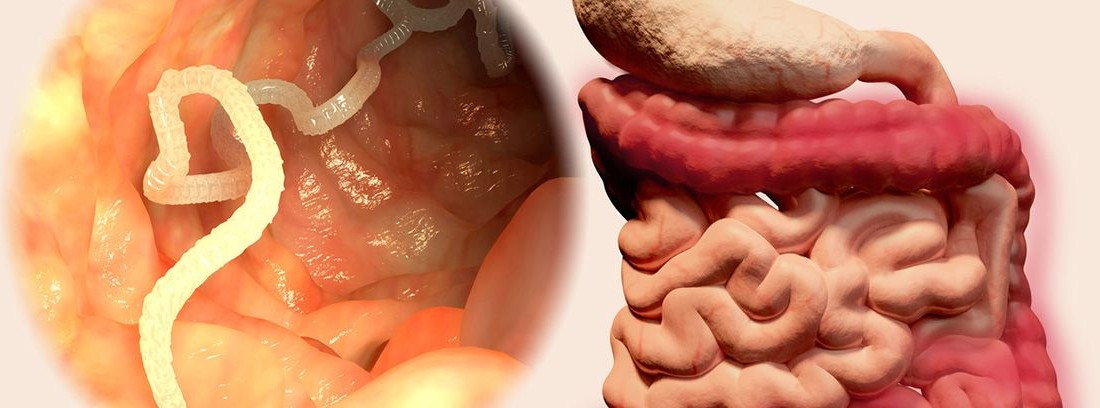What is tapeworm tape?

The tapeworm is a worm called Taenia spp that is the cause of taeniasis, the parasitization of the intestine. exist various types of tapeworm that can affect humans:
- Pig tapeworm or "the lonely one" (taenia solium)
- Cow tapeworm (taenia saginata)
- Recently discovered Asian taenia saginata.
This parasite is common in countries such as India, China, New Guinea, Zimbabwe, Mexico, Colombia, Guatemala, Peru ... However, with emigration and tourist trips, its presence has spread to countries such as the US, Canada, England, Spain , Australia…
How is it spread?
For the worm or tapeworm to survive and complete its biological cycle, there must be 2 hosts: a human being and an animal (wild boar, pig, cow, etc).
The cycle begins when the animal ingests feces containing parasite eggs and it is contagious (called swine cysticercosis). These animals are the main host for the larvae of the parasite, which encyst in the muscles of the animal. For its part, the human being is infected by eating raw pork or beef or undercooked infected with those worms. Although, in the case of Tenia solium, sometimes it is the man himself who, in an unhygienic environment, ingests the eggs, thus producing human cysticercosis.
The tapeworm only lives in the human intestine and can generate thousands of microscopic eggs that are expelled with the feces, being able to stay on the ground for a long time. Contamination of land with human feces makes it possible for animals to be infected.
How tall is the tapeworm?
The parasitic larva is anchored to the human small intestine, through a head or "scolex" and there it grows and matures until it becomes an adult worm. The worm can measure between 2 and 8 meters in the case of the pig tapeworm or solium and between 6 and 12 meters in the case of the cow tapeworm or saginata.
Symptoms
The most common symptoms of intestinal parasitization by tapeworms are:
- Nonspecific abdominal pain
- Headache
- Weakness and asthenia (tiredness)
- Anemia
- Sickness
- Diarrhea
- Hives or signs of hypersensitivity (less common).
However, in many cases, taeniasis is asymptomatic and the affected person can be perfectly nourished despite the existence of the worm in his intestine. It may also happen that it is the patient himself who observes the release (together with his feces) of small worm fragments; flattened white strips, called "proglottids" that can be mobile.
How do I know if I have tapeworms?
Diagnosis is made by collecting these fragments or proglottids that are passed with the stool for study in the laboratory. There, its characteristics such as size, head shape ... are studied to help determine the type of tapeworm.
(Updated at Apr 14 / 2024)